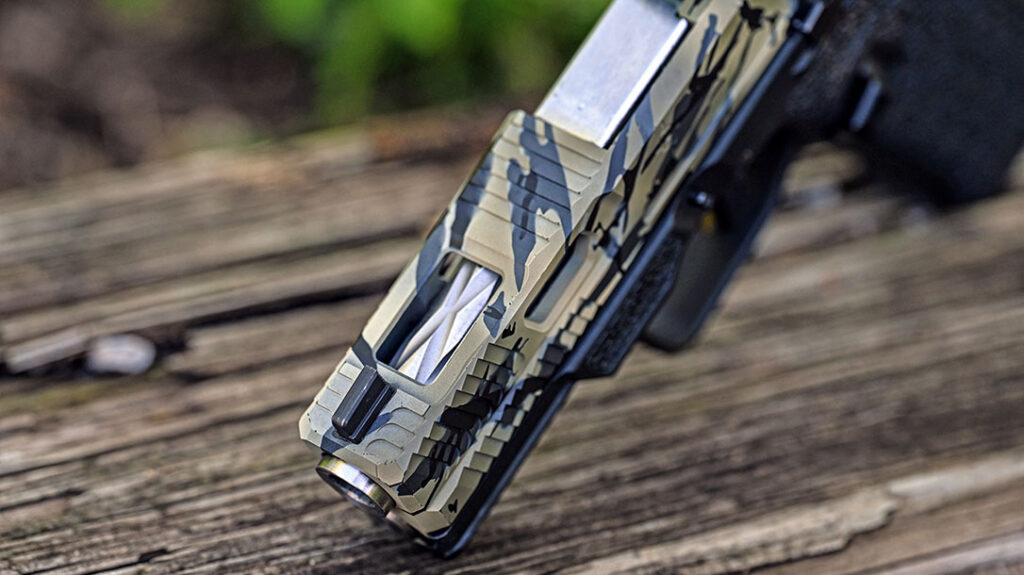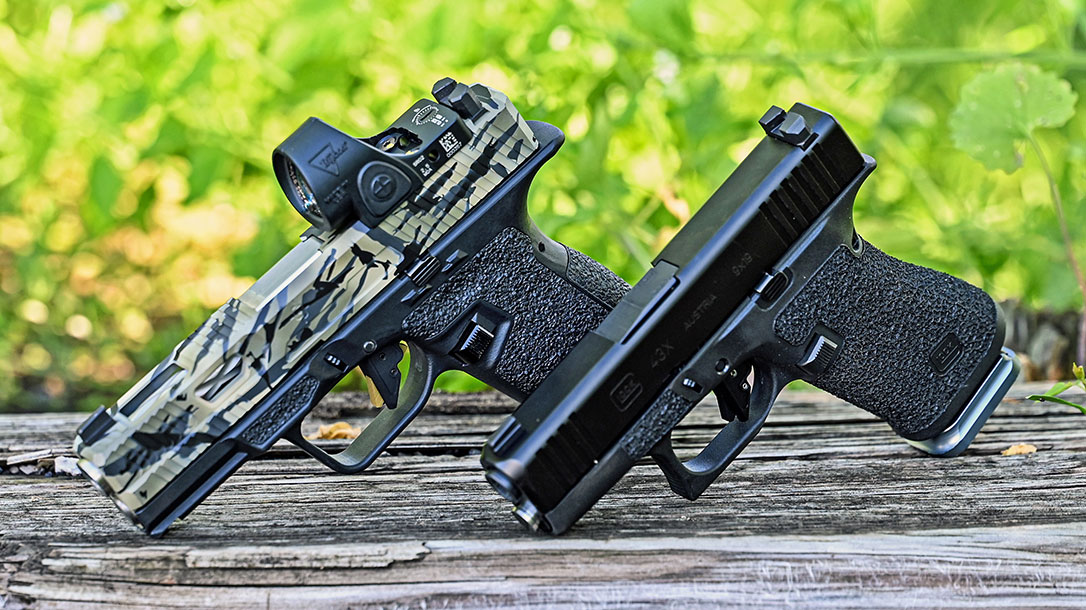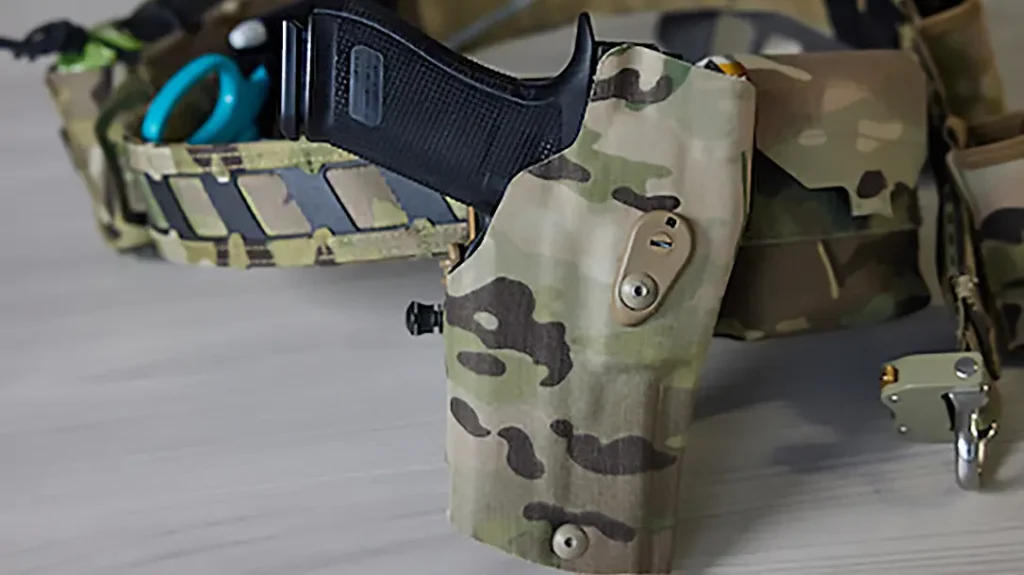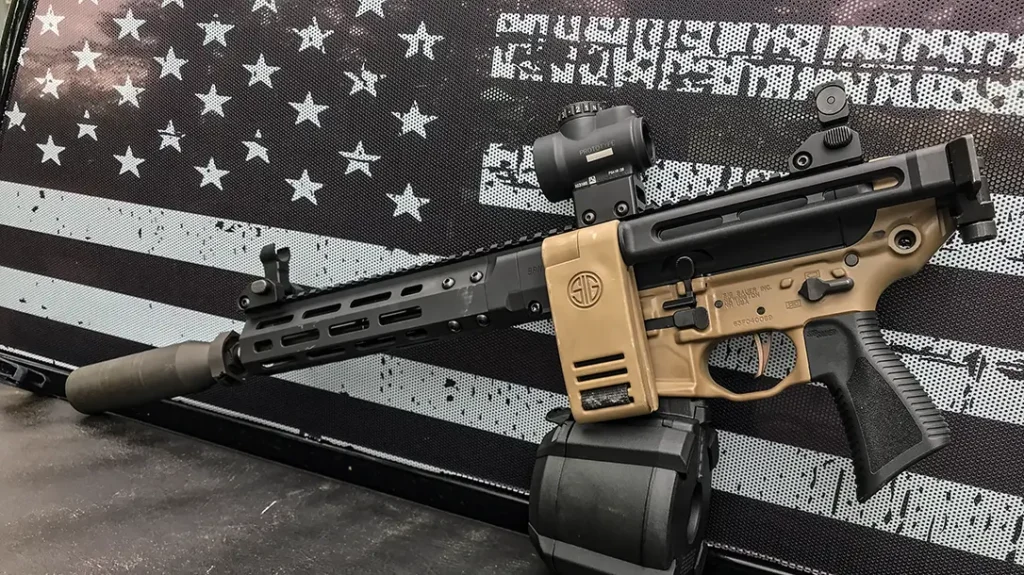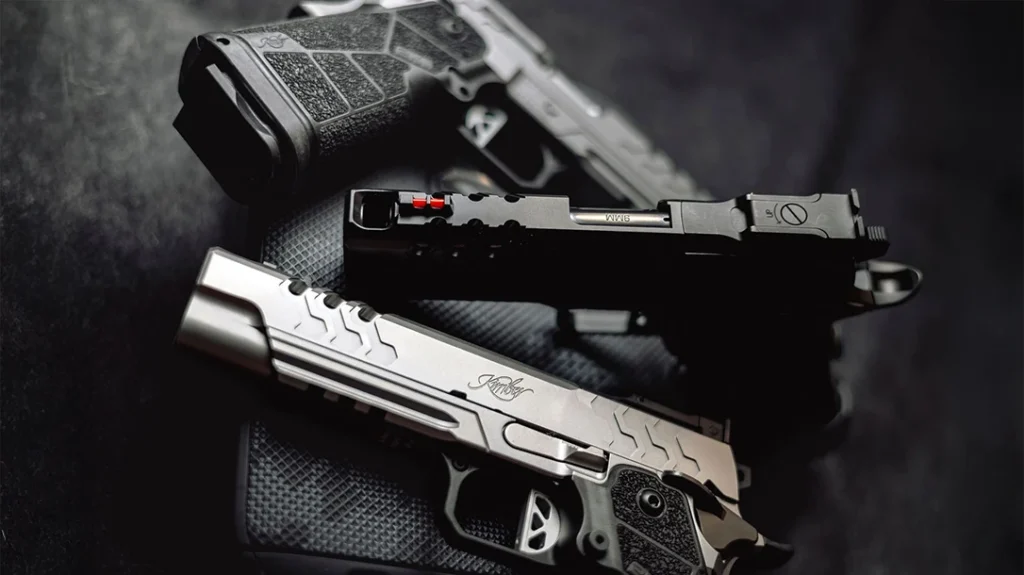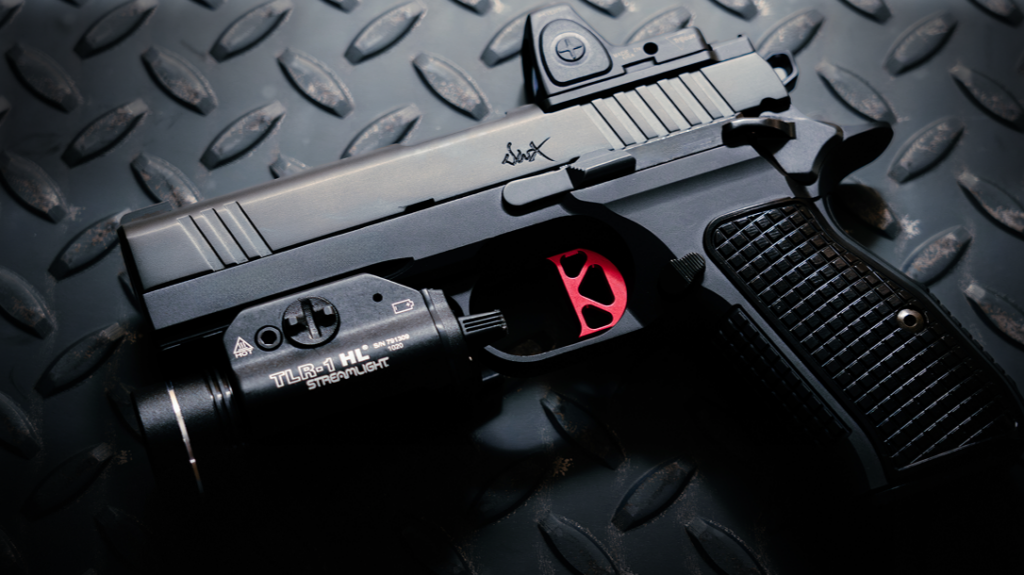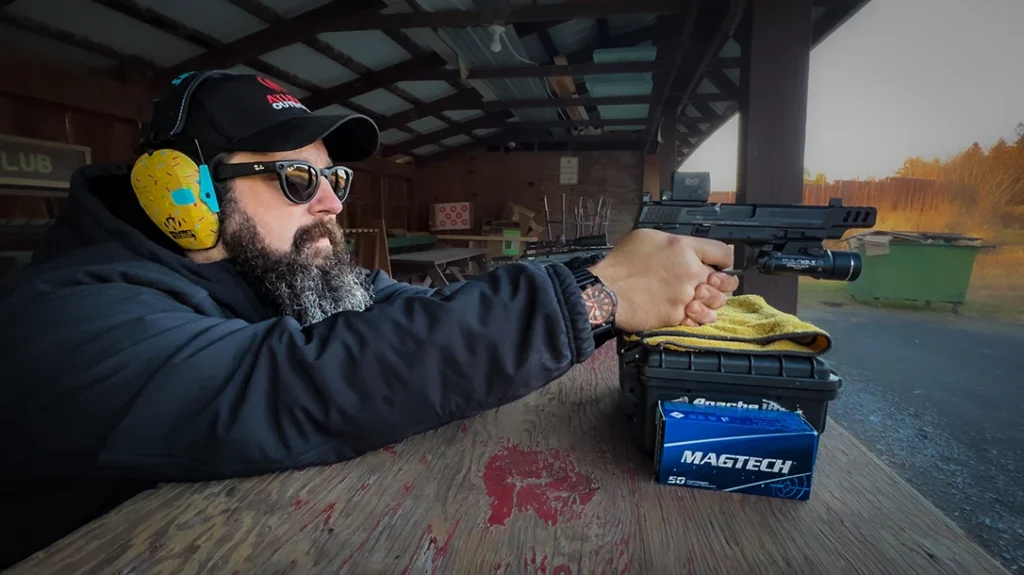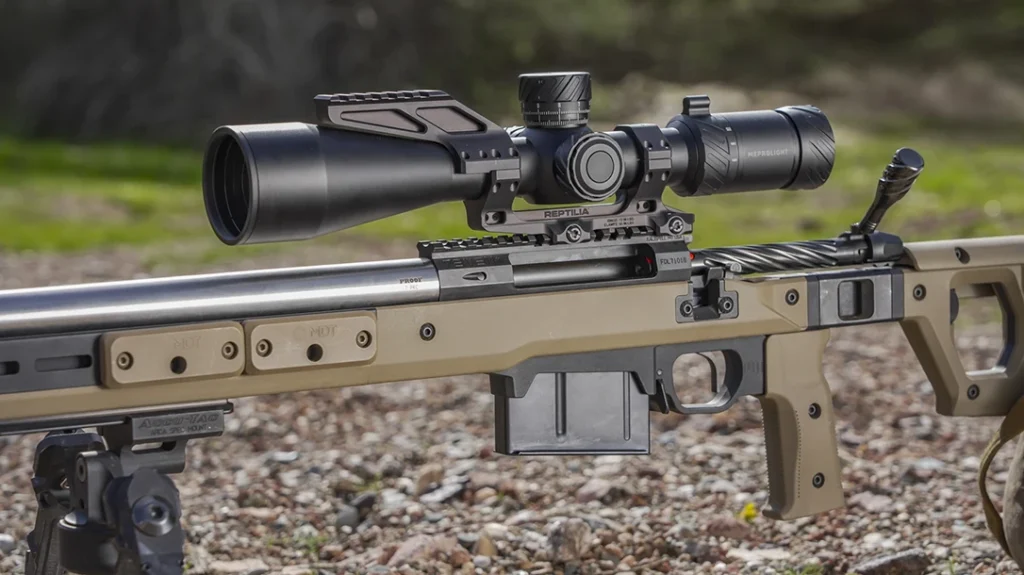I pretty much love everything about guns, and I love all guns. One thing I really enjoy, other than shooting, is building. Along the way, I found that there are best practices and things to avoid. With all of the options out there for customizing a Glock, I decided to share some of what I have learned along the way.
Customizing a Glock Best Practices
When I first got into guns, I was afraid to change anything on them. I liked them stock and basic and just wanted anything I shot and owned to run well. I was told early on that changing anything on your guns could result in failure and issues down the road. So, I stayed out of the custom world until I purchased my first Glock.
There were so many customization options that I couldn’t help but start dabbling in the custom world. With that dabbling came mistakes and successes. I am here to hopefully help you through the do’s and don’ts of upgrading your Glock.
Advertisement — Continue Reading Below

A Glock pistol is so simple that pretty much anyone can easily work on one. This is why the custom world has absolutely exploded with companies making parts, grip modules, etc. Not to mention some of the coolest custom Cerakote and engravings the world has ever seen.
If you own a Glock and want to customize it, you must first decide the end goal. Are you building a competition race gun? A carry setup? Or a trophy piece? This is the most important step in the custom Glock world. Your part selection will be much different for each option.
Advertisement — Continue Reading Below
Competition Setup
A competition gun is built for speed, comfort, and accuracy. So, a new grip module or some nice aggressive hand stippling might be perfect for this application.
In addition, you will probably want a longer, threaded barrel. This will allow you to run a compensator up front to help mitigate recoil and allow for quicker follow-up shots.
Your trigger weight really doesn’t matter when it comes to a competition gun. So, run as light or heavy of a trigger as you like with whatever shoe shape works best for you. Likewise, the same goes for iron sights and optics.
Advertisement — Continue Reading Below
The possibilities are endless when it comes to a competition Glock build.
Carry Setup
Now, on the other side of the spectrum, there is the carry gun setup. For a carry gun, you must prioritize function and durability over everything else. You must also consider safety.
If you swap out the trigger and it ends up with too light of a pull weight or is not drop-safe, you can run into some legal issues down the road. Not to mention the possible safety concerns for yourself and those around you.
Advertisement — Continue Reading Below
Additionally, your carry setup must be comfortable to carry. So, too aggressive a grip texture or module could tear your skin up and make you opt not to carry it.
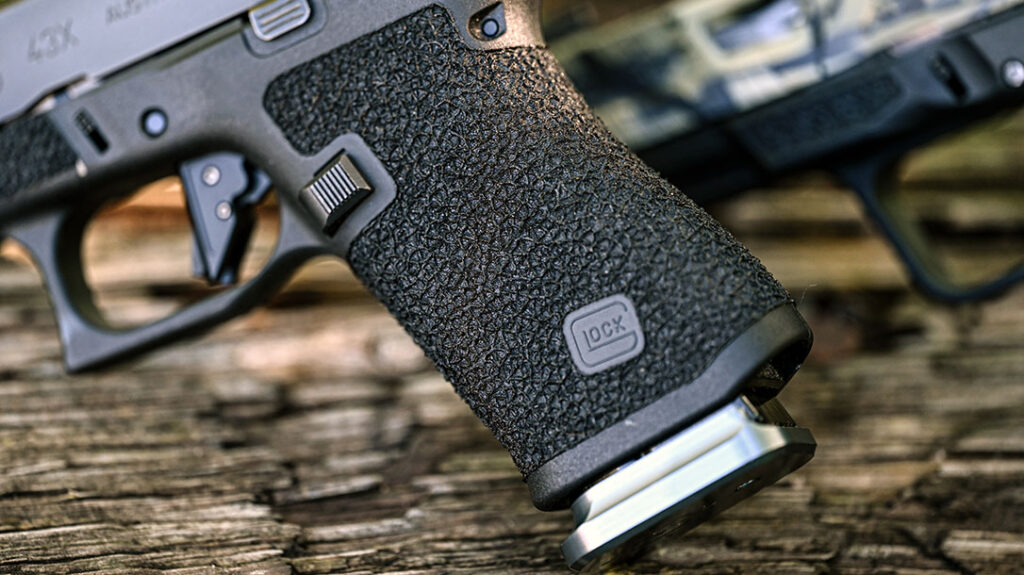
I built a G43X that I wanted to carry and sent the original frame off to have it hand-stippled. The guy did an amazing job, and it looked incredible. However, the texture was so aggressive that it irritated my skin after only a few minutes of concealed carry.
Advertisement — Continue Reading Below
You also have to consider concealability.
If you decide to run a big light up front and a compensator on the barrel, you are adding a bunch of extra bulk. This can make things very difficult to conceal and carry comfortably. I am not saying you can’t carry with a light and comp. But it will make things a bit tougher, and you will need to plan for the extra bulk.
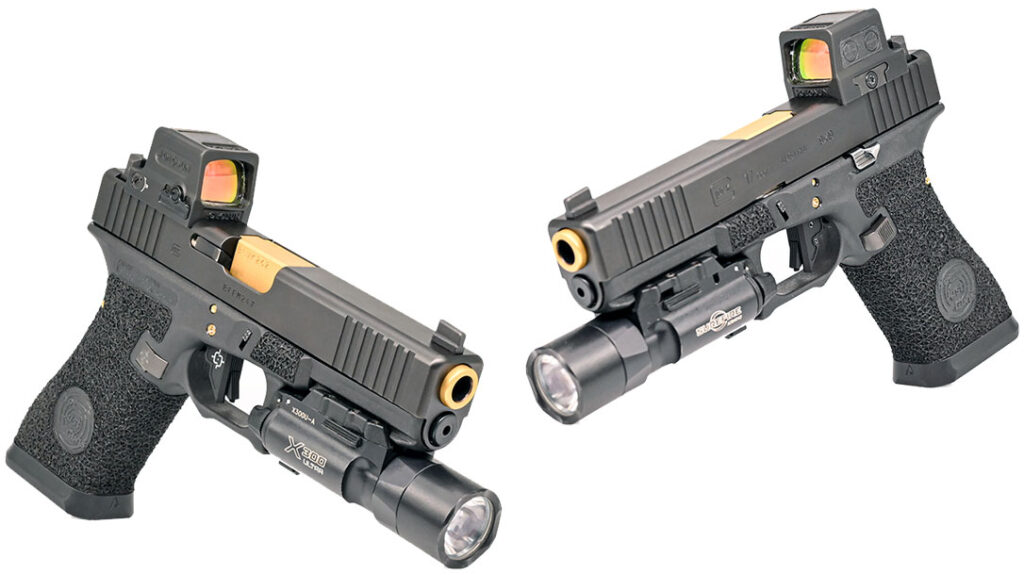
Advertisement — Continue Reading Below
If you plan on carrying with a red dot, I personally prefer direct milling for optics over the Glock MOS system. Direct milling is stronger and requires no plates or shims between your optic and the slide. This creates a stronger, more durable platform—perfect for concealed carry.
Legal Considerations of a Trigger Job
When it comes to changing out that trigger, you have to be cautious when it comes to carrying. If you are ever forced to use your Glock in self-defense, it will be taken and dissected by the police. A light trigger pull weight could easily go against you in a court case.
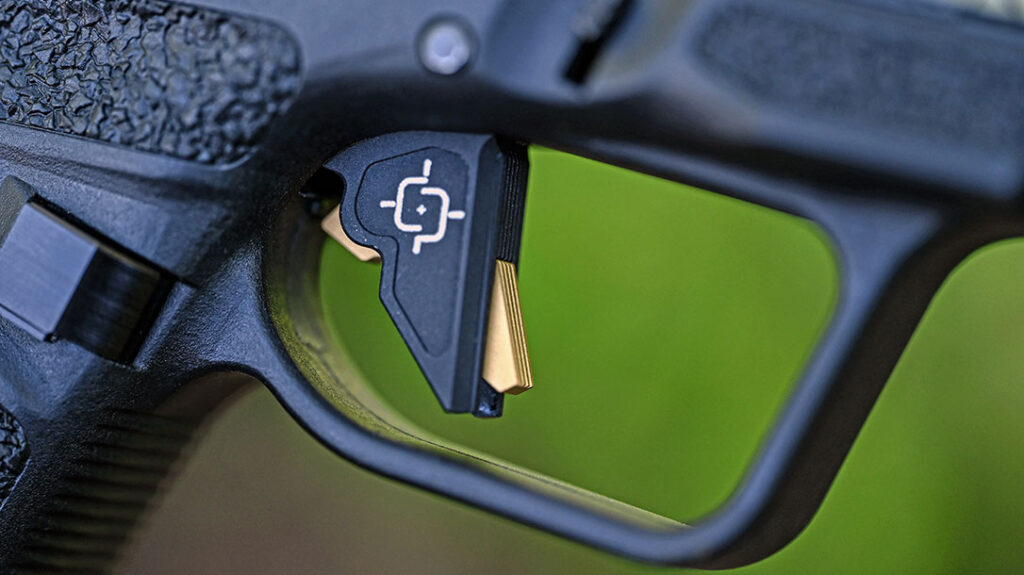
Advertisement — Continue Reading Below
Unlike the competition gun, where you can do anything you want, I highly recommend not doing too much to affect the overall performance of your carry gun build. This will just help avoid more legal complications later.
Trophy Piece
One of my favorite things folks are doing with Glocks is all the crazy custom work out there. When Gaston Glock designed the iconic pistol, I bet he never, in his wildest dreams, thought people would be turning them into literal works of art.
The great thing about showpiece builds is that the sky isn’t even the limit. These companies can use lasers and special coatings to put any theme or artwork you want into the grip, slide, barrel, and accessories. It is absolutely remarkable, honestly.
Advertisement — Continue Reading Below
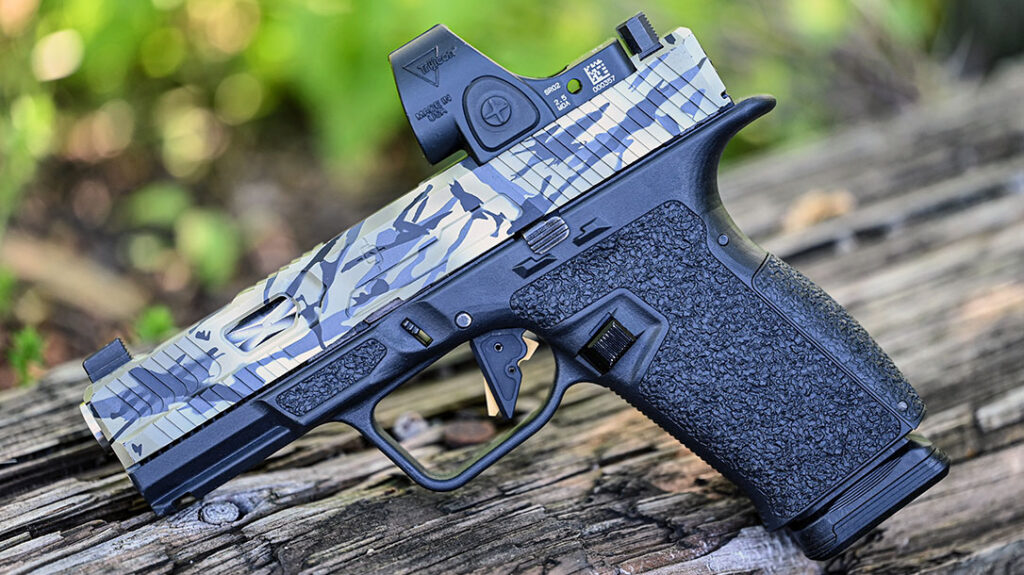
When it comes to these builds, there really aren’t any do’s and don’ts. The point is to be as wild as possible and create something unique and special. So, throw your favorite colors, trigger, sights, etc., on it, and have fun.
Personal Build
I like building a combination of all the above. As mentioned earlier, I put performance first but also appreciate a good-looking gun.
I prefer the stock grip modules with some laser engraving or hand stippling. This changes the feel a little and makes the gun more comfortable to hold. Then, I change out the trigger using a flat-faced shoe and a polished trigger bar. As a result, this smooths the pull some but doesn’t drop the pull weight too much.
Personally, I think the stock Glock slides are ugly, and the stock serrations are just not aggressive enough. So, I lean towards having my slides milled for better overall function while making the gun look much better.
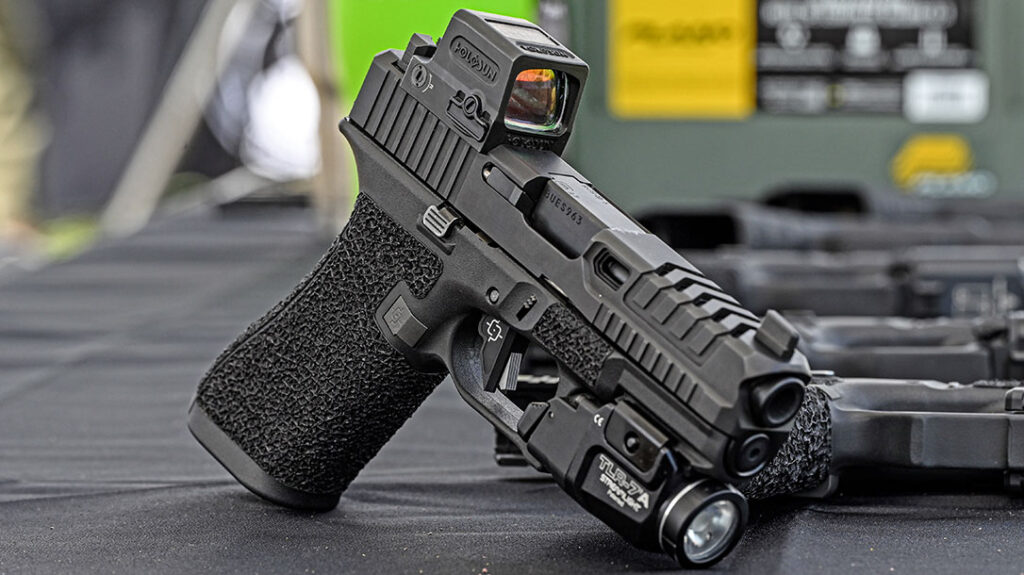
Iron sights are just fine for me, with a tritium front and blacked-out rear. However, if I want to run a red dot, I have the slide direct milled for that platform. Then I run true red dot backup suppressor height sights that are all black.
This allows you to lower 1/3 co-witness the irons through the glass of your optic. Thus, giving you a reference point if your dot goes down without taking up half of the window and getting in the way.
As far as I’m concerned, a barrel is a barrel when it comes to a carry gun. However, a fancy after-market barrel will improve the look of your gun. And in some applications, it can help you with accuracy.
Final Thoughts
It is important to remember that the Glock is yours. For this reason, you need to do what you like and what best suits your needs.
Although the platform is very easy to work on with just a few simple tools, having critical parts installed by a licensed gunsmith is always a good idea. This will help ensure the safe operation and reliability of your gun.
After changing out even the smallest parts, make sure you head to the range to test-fire your pistol. It is important to ensure everything is still working perfectly.
Have fun with it, and don’t be afraid to make your Glock your own.
